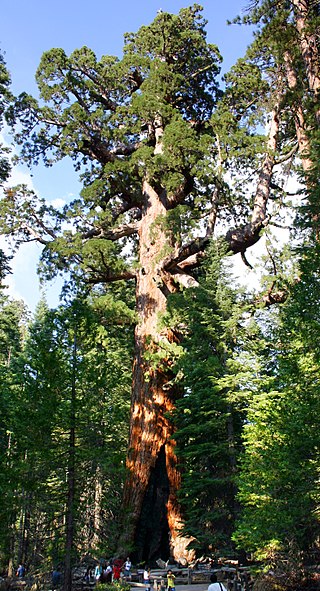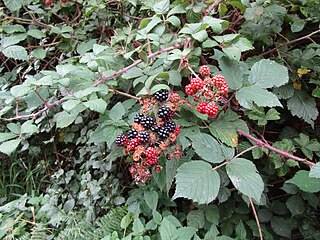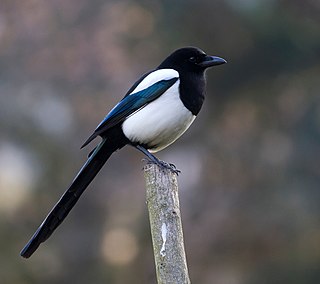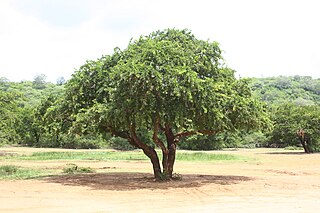
Thyme is a culinary herb consisting of the dried aerial parts of some members of the genus Thymus of flowering plants in the mint family Lamiaceae. Thymes are native to Eurasia and north Africa. Thymes have culinary, medicinal, and ornamental uses. The species most commonly cultivated and used for culinary purposes is Thymus vulgaris, native to Southeast Europe.

Genus is a taxonomic rank above species and below family as used in the biological classification of living and fossil organisms as well as viruses. In binomial nomenclature, the genus name forms the first part of the binomial species name for each species within the genus.

The lagomorphs are the members of the taxonomic order Lagomorpha, of which there are two living families: the Leporidae and the Ochotonidae (pikas). There are 110 recent species of lagomorph of which 109 are extant, including 10 genera of rabbits, 1 genus of hare and 1 genus of pika. The name of the order is derived from the Ancient Greek lagos + morphē.

Sequoiadendron giganteum, also known as the giant sequoia, giant redwood or Sierra redwood is a coniferous tree, classified in the family Cupressaceae in the subfamily Sequoioideae. Giant sequoia specimens are the most massive trees on Earth. They are native to the groves on the western slopes of the Sierra Nevada mountain range of California but have been introduced, planted, and grown around the world.

Rubus is a large and diverse genus of flowering plants in the rose family, Rosaceae, subfamily Rosoideae, with over 1,350 species, commonly known as brambles.

Geranium is a genus of 422 species of annual, biennial, and perennial plants that are commonly known as geraniums or cranesbills. They are found throughout the temperate regions of the world and the mountains of the tropics, with the greatest diversity in the eastern part of the Mediterranean region.

Magpies are birds of various species of the family Corvidae. Like other members of their family, they are widely considered to be intelligent creatures. The Eurasian magpie, for instance, is thought to rank among the world's most intelligent creatures, and is one of the few nonmammalian species able to recognize itself in a mirror test. Magpies have shown the ability to make and use tools, imitate human speech, grieve, play games, and work in teams. They are particularly well known for their songs and were once popular as cagebirds. In addition to other members of the genus Pica, corvids considered magpies are in the genera Cissa, Urocissa, and Cyanopica.

Cortaderia is a genus of plants in the Poaceae or grass family of plants.

Hyacinthus is a small genus of bulbous herbs, spring-blooming perennials. They are fragrant flowering plants in the family Asparagaceae, subfamily Scilloideae and are commonly called hyacinths. The genus is native predominantly to the Eastern Mediterranean region from the south of Turkey to the Palestine region, although naturalized more widely.

Ostriches are large flightless birds. Two living species are recognised, the common ostrich, native to large areas of sub-Saharan Africa, and the Somali ostrich, native to the Horn of Africa.

Ravenala is a genus of monocotyledonous flowering plants. Classically, the genus was considered to include a single species, Ravenala madagascariensis from Madagascar.

Begoniaceae is a family of flowering plants with two genera and about 2040 species occurring in the subtropics and tropics of both the New World and Old World. All but one of the species are in the genus Begonia. There have been many recent discoveries of species in the genus Begonia, such as Begonia truncatifolia which is endemic to San Vincente, Palawan. B. truncatifolia is smaller than other species of the genus Begonia and this new species is proposed Critically Endangered by standards set by the IUCN. The only other genus in the family, Hillebrandia, is endemic to the Hawaiian Islands and has a single species. Phylogenetic work supports Hillebrandia as the sister taxon to the rest of the family. The genus Symbegonia was reduced to a section of Begonia in 2003, as molecular phylogenies had shown it to be derived from within that genus. Members of the genus Begonia are well-known and popular houseplants.

Limonia acidissima is the only species within the monotypic genus Limonia. Common names for the species in English include wood-apple and elephant-apple. It is sometimes also called monkey fruit.

The genus Cathartes includes medium-sized to large carrion-feeding birds in the New World vulture (Cathartidae) family. The three extant species currently classified in this genus occur widely in the Americas. There is one extinct species known from the Quaternary of Cuba.

James' sportive lemur, or the Manombo sportive lemur, is a sportive lemur endemic to Madagascar. Like all members of its genus, it is nocturnal and largely folivorous. It is threatened by habitat loss and unsustainable hunting.
The Chloroflexota are a phylum of bacteria containing isolates with a diversity of phenotypes, including members that are aerobic thermophiles, which use oxygen and grow well in high temperatures; anoxygenic phototrophs, which use light for photosynthesis ; and anaerobic halorespirers, which uses halogenated organics as electron acceptors.
Dendrolaelaps is a genus of mites in the family Digamasellidae. There are more than 170 described species in Dendrolaelaps.

Durian Burung is a small border town in Mukim Batang Tunggang Kiri, Padang Terap District, Kedah, Malaysia. Across the border is Ban Prakop of Songkhla, Thailand.
Crouzeliinae is an extinct subfamily of Pliopithecidae primates that inhabited Europe and China during the Miocene, approximately 8–14.5 million years ago - they appear to have originated in Asia and extended their range into Europe between 17 and 13 million years ago. Crouzeliines can be distinguished from the other Pliopithecoidea subfamilies on the basis of uniquely derived dental traits.















